You have three widespread options for Wi-Fi on computers: Onboard Wi-Fi, PCIe Wi-Fi Card, and a USB Wi-Fi dongle. They all have their respective pros and cons.
For instance, the apparent benefit of onboard Wi-Fi is that it saves an extra PCIe slot on your motherboard. Similarly, PCIe Wi-Fi Cards are great as they allow you to replace or uninstall them in the future, and USB Wi-Fi cards are just cheap and accessible for an average user.
But the real question is, how do they differ in performance? Here we will compare Wi-Fi vs. Wi-Fi Card vs. Wi-Fi USB in terms of their characteristics and performance.
TABLE OF CONTENTS
Onboard Wi-Fi vs. Wi-Fi Card vs. Wi-Fi USB
What is Onboard Wi-Fi?
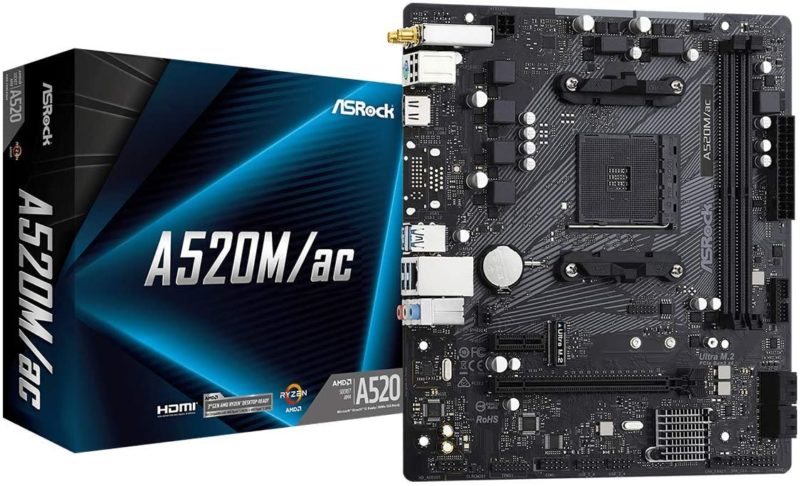
An onboard Wi-Fi means that the motherboard has a Wi-Fi modem built in.
This is perhaps the simplest way to build a desktop where you need a Wi-Fi connection. However, onboard Wi-Fi is supported only in certain motherboards.
Desktop motherboards with built-in motherboards are not relatively standard, particularly in the budget and mid-range – to an extent.
Also Read: Do Motherboards Come with Wi-Fi?
Pros of Onboard Wi-Fi
Eliminates The Cost of Purchasing Extra Components
For users needing Wi-Fi, a pre-installed motherboard with onboard Wi-Fi capability will eliminate the cost of purchasing an extra component.
Great for Certain Builds and Motherboard Form Factors
With onboard Wi-Fi, people without access to cable networks can access their networks immediately after finishing their builds.
They are more, in a sense, streamlined and optimized.
Another significant benefit is that onboard Wi-Fi saves you from utilizing your precious PCIe slots. This is particularly important on motherboards with limited PCIe slots, such as a Mini ITX motherboard.
Cons of Onboard Wi-Fi
No Performance Difference is to be Expected
Compared to PCIe Wi-Fi Card, there isn’t any visible performance difference in onboard PCIe Wi-Fi Card.
The actual difference is made by the version of the Wi-Fi, its frequency range, channel bandwidth, access scheme, etc. (We cover this in the FAQ section below)
Hinders Upgradability
One significant disadvantage of having onboard Wi-Fi is that it hinders the upgradability of the Wi-Fi network.
There may be faster options for accessing Wi-Fi with more excellent range, higher speeds, and lower latency.
Upgrading the built-in Wi-Fi is impossible with onboard Wi-Fi, and you must settle for the speeds provided by your board’s onboard Wi-Fi adapter.
For example, if your motherboard comes with Wi-Fi 5 card, you cannot upgrade it to the newer Wi-Fi 6.
Marginally More Expensive than Non-WiFi Version
Additionally, a motherboard with onboard Wi-Fi is more expensive than one without. There are exceptions, though.
This might be something that users who don’t need Wi-Fi on their desktops would have to consider.
May Have to Sacrifice on a Certain Feature
If a motherboard features onboard Wi-Fi, it may come at the cost of another subcomponent. This is because the amount of PCIe lanes in a system is limited.
For instance, the ASRock A520M/AC (Wi-Fi) does not feature the VGA port, whereas the ASRock A520M-HDV (Non-WiFi) does.
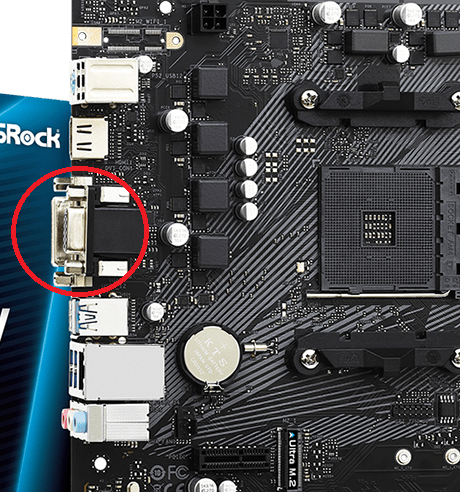
What is a Wi-Fi Card?
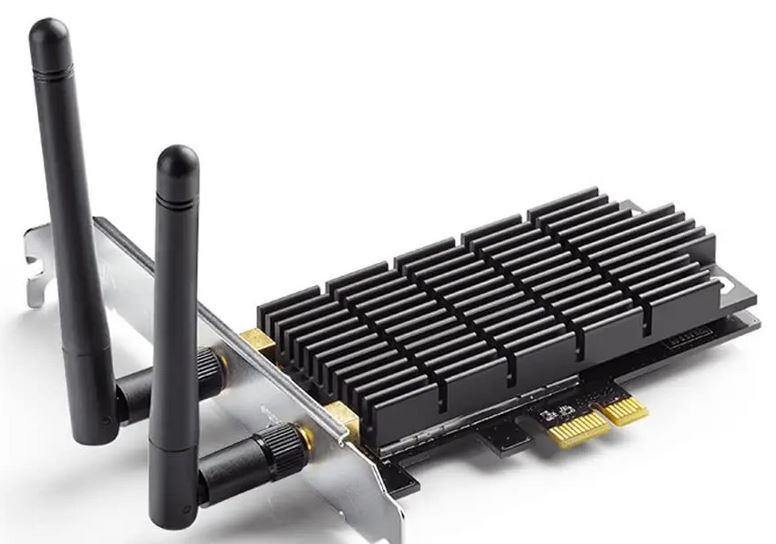
A Wi-Fi card is a high-speed PCIe device that adds Wi-Fi support for a motherboard by connecting to one of its PCIe slots.
Wi-Fi cards are relatively affordable but a little more expensive than USB Wi-Fi. However, this may be the best option for fast wireless connections for users with a PCIe slot to spare.
Also Read: Which PCIe Slot for Wireless Card?
Pros of Wi-Fi Card
High-Speed Connectivity
It offers high speed stable wireless connections. This is great for activities like online gaming.
The latest PCIe Wi-Fi 6 cards have an average of 2.4 Gbps max transfer speed at 5 GHz frequency and 574 Mbps on 2.4 GHz Frequency. This translates to about 300 MB/s.
Since most newer devices operate at 5 GHz frequency, you can leverage the faster 2.4 Gbps speeds.
Replaceable
One of the most significant advantages here is that you can replace them with a newer card. So if Wi-Fi 7 is introduced in the future, you can return it quickly.
You can also switch them over to another PC when need be.
Stable Connection
Most PCIe Wi-Fi cards use the multiple-input and multiple-output (MIMO) method using multiple antennas, allowing the card to transmit and receive various data signals simultaneously. This further allows for higher and more stable transfer speeds.
Cons of Wi-Fi Card
Challenging to Install for Non-Techies
Wi-Fi PCIe cards can be challenging to install for novice users. They are also more expensive than USB Wi-Fi adapters, so most users on a budget would opt for the latter instead.
Occupy Precious PCIe Slots
Another significant disadvantage of Wi-Fi cards is that they occupy PCIe lanes and slots. They are no good if you do not have a PCIe slot available. Therefore, you must ensure that you have both a free PCIe slot and a free PCIe lane.
Can Cramp Up Space in the Chassis
Finally, a Wi-Fi PCIe Card can be an issue when you have cramped up space inside the PC. Sometimes, they can block more significant components like graphics cards from being installed.
Not a Huge Difference in Latency Compared To a USB Dongle
Contrary to the popular notion, a USB 3.0 Wi-Fi performs as well as a PCIe network card in terms of latency. You can see the results of this in this video.
The latency depends upon many other factors, including the distance from the Wi-Fi router and if there are any obstacles.
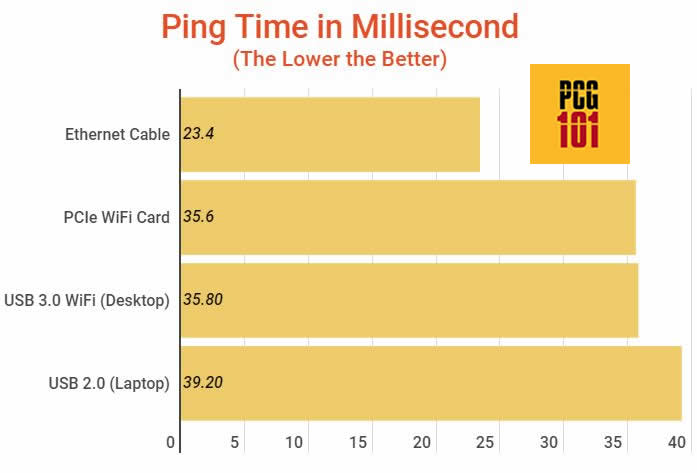
Hence, you can see here that the difference in latency between PCIe Wi-Fi Card and the USB 3.0 Wi-Fi Card isn’t too drastic.
Of course, the rugged wire ethernet cable would provide the best latency.
What is Wi-Fi USB Adapter?
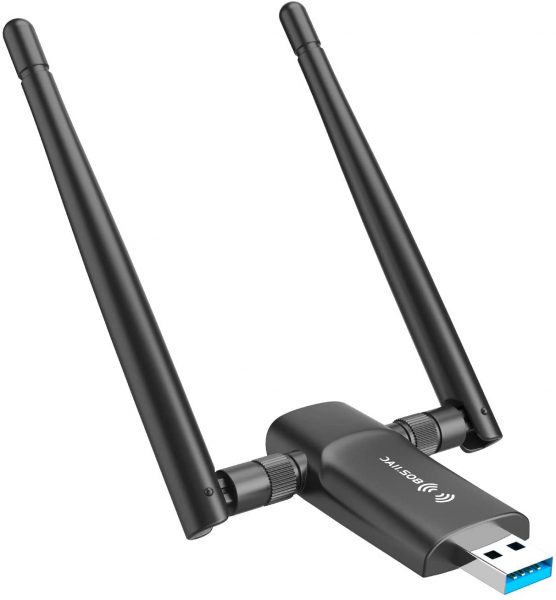
Unlike PCIe cards, these do not go inside the case. They are plugged into a USB port.
These adapters are usually affordable, meaning most users who want decent or essential Wi-Fi can go for them.
Pros of Wi-Fi USB Adapter
Easy to Install
They are straightforward to install. All you do is plug the device into an available USB slot, and Voila! Drivers are installed, and you’re good to go.
You can get one with a USB extender to help you beat Wi-Fi dead spots in your workspace, allowing you to get the best signal coverage.
You don’t need to open your case to learn about PCIe lanes or slots with these. They are small and compact devices that do not occupy much space.
Since they are small, you can carry them around with you.
Affordable
As mentioned earlier, compared to USB Wi-Fi Cards, they can be much more affordable.
Cons of Wi-Fi USB Adapter
Weak Performance
One of the most significant advantages here is their weak performance. They have weaker reception. Their transfer rate is much slower than a built-in card and less stable.
As of yet, USB Wi-Fi dongles still operate at Wi-Fi 5 protocol. They have a max transfer speed of 867 Mbps, which is supposed to be 2.4 Gbps on Wi-Fi 6.
The following compares a Wi-Fi 6 PCIe Card (TP-Link AX3000) vs. a Wi-Fi 5 USB Dongle (Foktech AC600).
TL;DR
- The Wi-Fi 5 USB Dongle maintains a download speed of 29 Mbps
- The Wi-Fi 6 PCIe Card maintains a download speed of 100 Mbps
- The Ping (latency) is the same on both
The USB version also has a lot of impact on the performance of the Wi-Fi dongle. USB 3.0 Wi-Fi cards have a better performance compared to USB 2.0 Cards.
USB 2.0 has a transfer speed of 480 Mbps. However, this is just the theoretical max, and the protocol never reaches this transfer speed. USB 3.0, on the other hand, has a rate of about 4.8 Gbps!
Therefore, a USB 3.0 would never bottleneck your USB Wi-Fi transfer speeds (at least with the current generation of USB Wi-Fi)
Prone to Damage and Unseating
Also, since they’re exposed, you could end up unseating the adapter in the USB slot by accident, therefore, interrupting your network connection.
Also Read: How to Connect Extra Fans to Motherboard?
What is the Latest Wi-Fi Protocol?
The latest Wi-Fi iteration is the Wi-Fi 6 or the 11AX. As with each iteration, Wi-Fi 6 improves on many aspects, including the data transfer rate compared to the previous version.
The following is the primary difference in terms of specs:
[table “Wifi6comparison” not found /]| Wi-Fi 4 802.11n |
Wi-Fi 5 802.11ac |
Wi-Fi 6 802.11ax |
|
| Date Introduced |
2009 | 2013 | 2019 |
| Frequency Range | 2.4 and 5 GHz | 5 GHz | 2.4 and 5 GHz |
| Channel Bandwidth (MHz) | 20, 40 | 20, 40, 80, 80+80, 160 |
20, 40, 80, 80+80, 160 |
| Quadrature Amplitude Modulation |
64-QAM | 256-QAM | 1024-QAM |
| Spatial Streams | 4 | 4 to 8 | 8 |
| MU-MIMO | No | Downlink | Uplink and Downlink |
| Access Scheme | OFDM | OFDM | OFDM and OFDMA |
The table above is extracted from the following video. Recommended watch.
Also Read: Do Motherboards Have Bluetooth?
Conclusion
Here we compared onboard Wi-Fi vs. Wi-Fi card vs. Wi-Fi USB. While the final say remains with you, each implementation has perfect applications.
An onboard adapter is excellent for those who want to save themselves from the hassle of procuring separate Wi-Fi cards.
A PCIe Wi-Fi card is excellent for users who want a stable connection and future upgrades.
A USB dongle can be a great way to provide essential Wi-Fi to a motherboard that doesn’t have onboard Wi-Fi. It’s also ideal for moderate Wi-Fi users on a budget and those who want this method’s portable aspect.
FREQUENTLY ASKED QUESTIONS
1. What is Wi-Fi Frequency Range?
Frequency ranges or frequency bands are radio wave frequencies that transmit Wi-Fi data. There are two ranges: 2.4 and 5.0 GHz, each with pros and cons. 2.4 GHz has excellent coverage and can penetrate through walls, while 5.0 GHz travels faster.
2. What is Wi-Fi Channel Bandwidth?
The Wi-Fi channel bandwidth determines the connection transfer speed or data rate. The higher the channel’s bandwidth is, the higher the transfer speed.
3. What is Wi-Fi Quadrature Amplitude Modulation?
Wi-Fi QAM is a method through which data is attached to and then transmitted through radio waves, where it is received by a separate device. The higher the QAM is, the faster data transfers. The QAM-1024 on Wi-Fi 6 can enable a 25% higher data rate than Wi-Fi 5.
4. What is MU-MIMO?
MU-MIMO stands for multi-user, multiple-input, and multiple-output technology.
It allows a Wi-Fi router to communicate with multiple devices at the same time.
This means that each device doesn’t need to wait its turn, and therefore, improves the Wi-Fi connection’s efficiency.
As a result, the more devices you have, the more you’ll benefit from an MU-MIMO-supported router.
